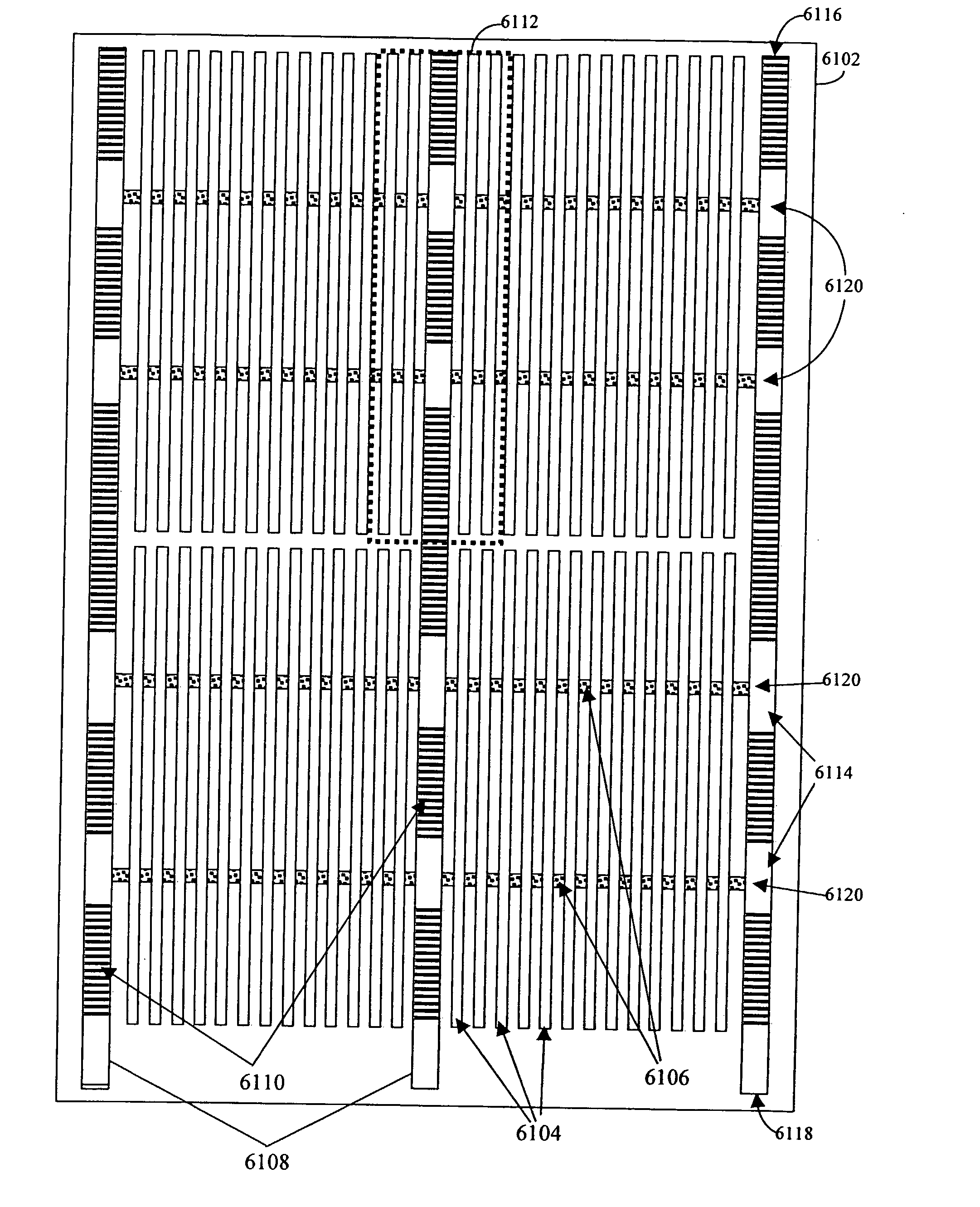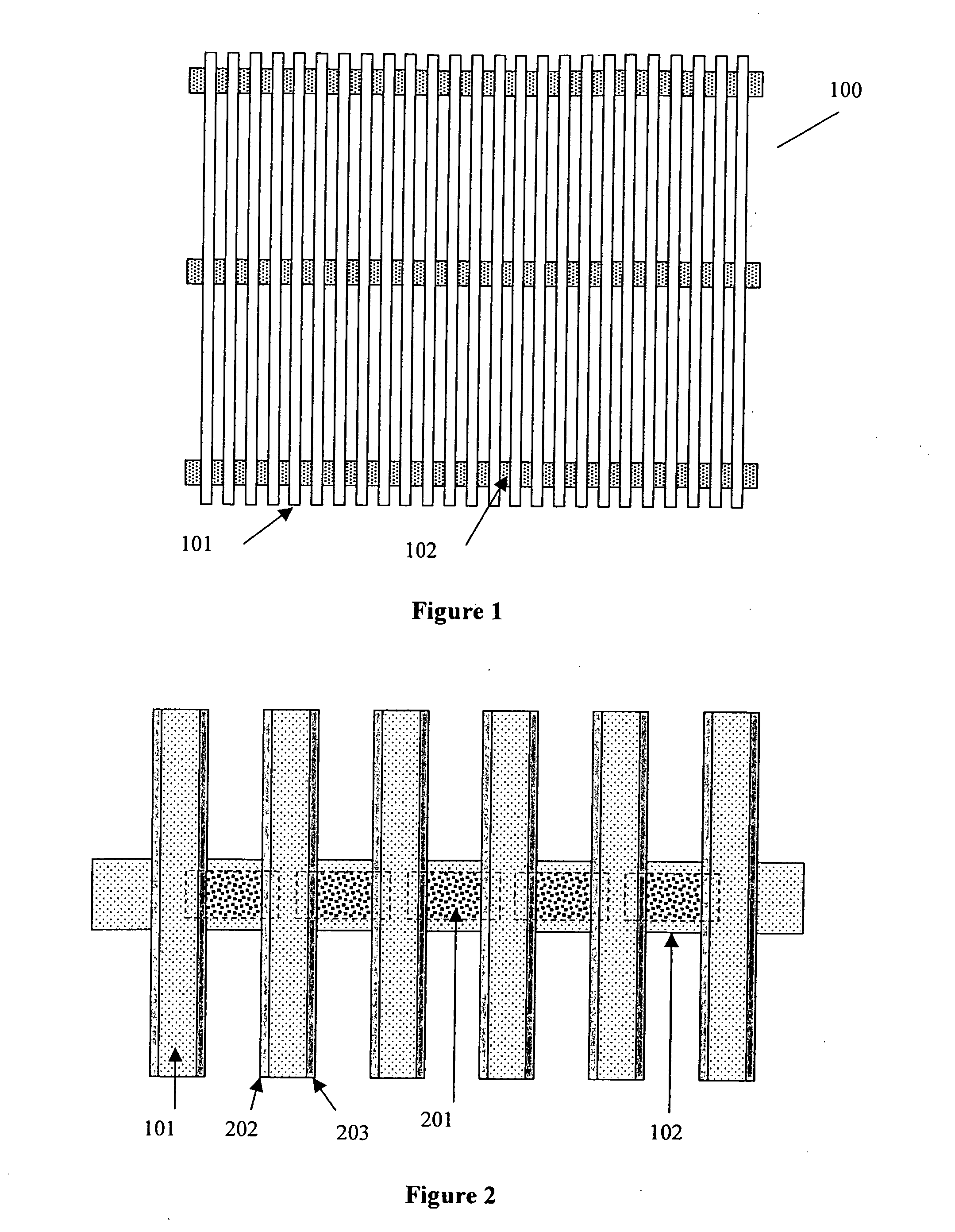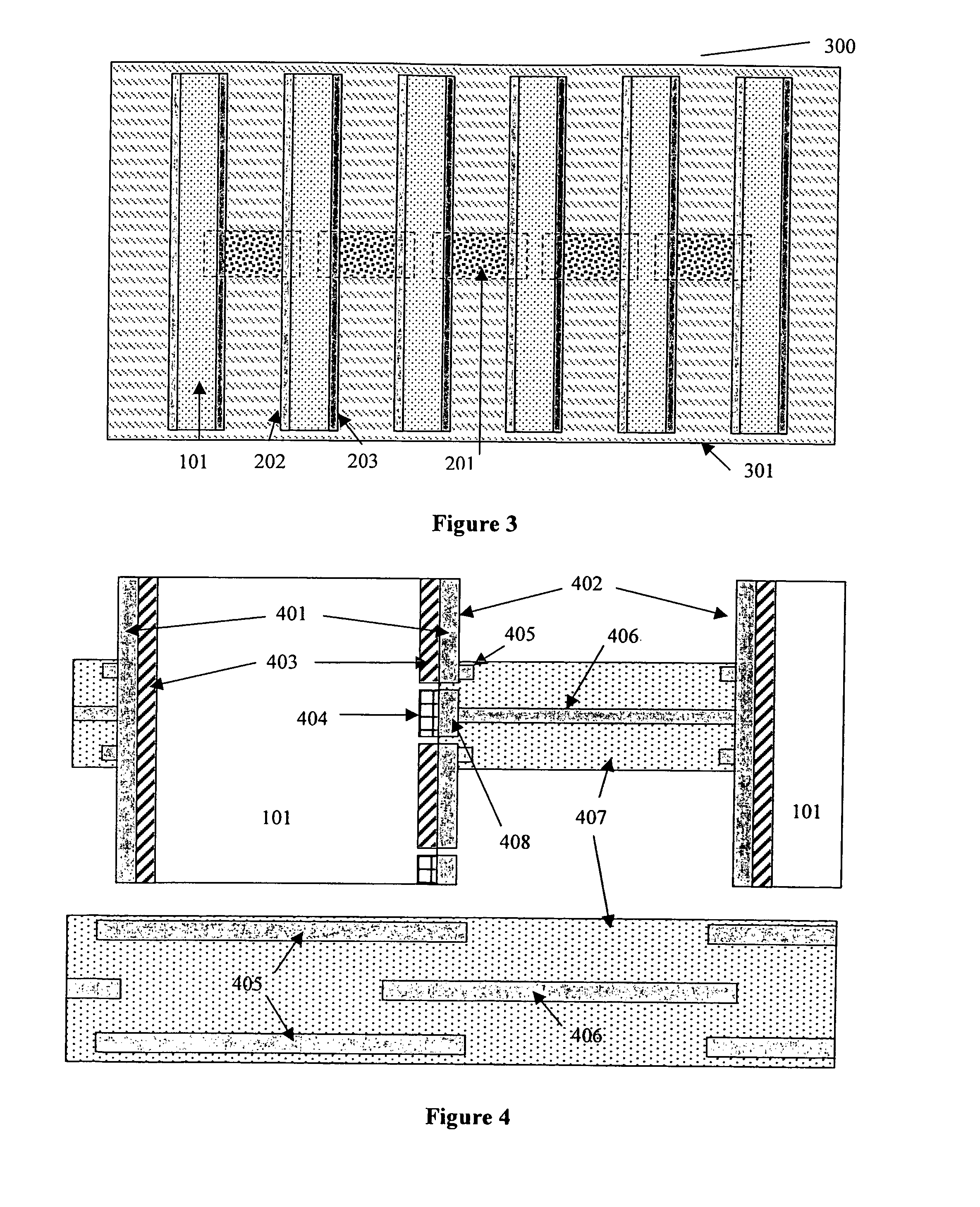Solar Cell (Sliver) Sub-Module Formation
a solar cell and sub-module technology, applied in the field of solar cell sub-modules, can solve the problems of elongated silicon slices in which elongated solar cells are formed, need careful handling, and limited scope of existing approaches to use elongated solar cells to form photovoltaic devices, and achieve the effect of substantially different voltage and current characteristics
- Summary
- Abstract
- Description
- Claims
- Application Information
AI Technical Summary
Benefits of technology
Problems solved by technology
Method used
Image
Examples
Embodiment Construction
Sub-Module Formation
[0235]Referring to FIG. 1, elongate solar cells 101 and crossbeams 102 are assembled to form a sub-module referred to herein as a “raft” sub-module 100. Although the spacing between adjacent elongate solar cells 101 is shown in FIG. 1 as being approximately equal to the width of each cell, in the general case the spacing between cells 101 can range from zero (whereby adjacent cells abut one another) up to several times the width of each cell. The crossbeams 102 can be made of any material and are preferably thin, not electrically conductive (or are coated with an insulating material) and can be readily and selectively coated with conductive tracks. For example, thin strips of silicon from 30 microns to 100 microns thick, 1 to 3 mm wide, and 2 to 20 cm long are particularly suitable for the crossbeams 102. The cells 101 are mechanically adhered to the crossbeams 102 using adhesive or metal solder or conductive epoxy or a similar material.
[0236]Referring to FIG. 2,...
PUM
| Property | Measurement | Unit |
|---|---|---|
| thick | aaaaa | aaaaa |
| thick | aaaaa | aaaaa |
| diameter | aaaaa | aaaaa |
Abstract
Description
Claims
Application Information
 Login to View More
Login to View More - R&D
- Intellectual Property
- Life Sciences
- Materials
- Tech Scout
- Unparalleled Data Quality
- Higher Quality Content
- 60% Fewer Hallucinations
Browse by: Latest US Patents, China's latest patents, Technical Efficacy Thesaurus, Application Domain, Technology Topic, Popular Technical Reports.
© 2025 PatSnap. All rights reserved.Legal|Privacy policy|Modern Slavery Act Transparency Statement|Sitemap|About US| Contact US: help@patsnap.com



